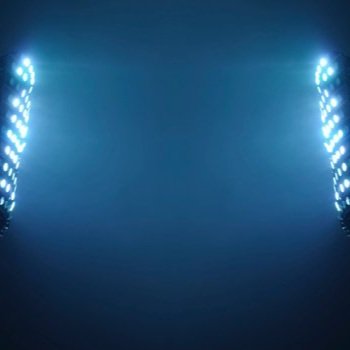Lighting the Court: Standards for Levels of Basketball Play
Basketball is one of the most popular sports in the U.S. Since it's usually played indoors, adequate lighting is essential. When there isn't enough light, players can't keep track of what is happening on the court. Too much light could be even worse.
For those reasons, basketball court lighting is divided into six categories to adhere to industry standards established by the International Lighting Association.
Training and entertainment activities
The lighting matches the standards for basketball courts operated by foreign countries, courts in elementary and secondary schools, and internal company courts. Basketball courts for training and entertainment activities need a horizontal average illumination of 300 lux. Uniform degree requirements aren't high.
Amateur and professional training
Such lighting must comply with high-level foreign-operated basketball courts, college, and county-level courts, and internal company advanced basketball courts. The required horizontal average illumination needs to be 500 lux with higher uniformity. This means that light distribution needs to be pretty even.
Professional competitions
Lighting for professional competition standards must comply with the competitions organized by different sports associations (provincial and municipal). This lighting category requires a 750-lux horizontal average illumination with very high uniformity.
TV broadcasts of national and international competitions
Lighting for national and international competitions' TV broadcasts must correspond with set standards. These standards align with international invitational tournaments, international and intercontinental individual events, and international tournaments. Moreover, such lighting should also comply with national youth games, domestic general and individual events, ethnic minority games, and other international competitions.
Lighting for national and international competitions' TV broadcasts must be in line with camera contrast. Since such broadcast requires multiple cameras, there are rules regarding their position. The main cameras should be placed on stands on both sides of the court, while the auxiliary cameras are found on the ends and used for close-ups.
The illumination for the main cameras needs to be 1000 lux. The vertical illumination requirements for the auxiliary cameras are 750 lux, with the requirements for uniformity.
TV broadcasts of major international competitions
Such lighting needs to align with the competitions organized and recognized by the International Olympic Committee (Olympic Games, World Championships, World and International Cups, qualifiers, etc.). The lighting should also comply with competitions organized and recognized by the General Administration of Sport of China.
The illumination facing the primary camera should be 1400 lux, and the vertical illumination in the direction of auxiliary cameras should be 1000 lux. There are also high uniformity requirements.
HDTV broadcasts of major international competitions
These lighting standards match the Olympic Games, World Championships, World and International Cups, National Games, etc.
The illumination directed towards the primary camera must be 1400 lux, while the vertical illumination in the direction of auxiliary cameras needs to be 1000 lux. Plus, there are very high uniformity requirements for vertical illumination.
Let the pros handle all lighting requirements
Basketball courts need to comply with strict requirements to fully function and host different events. That's why any renovations and design changes should be done by professionals who have years of experience and are familiar with the industry standards.
CourtMaster Sports specializes in the construction, renovation, resurfacing, and repairs of tennis courts, pickleball courts, basketball courts, bocce courts and more. Palm Springs - (760) 548-3545 Las Vegas - (702) 825-8818

